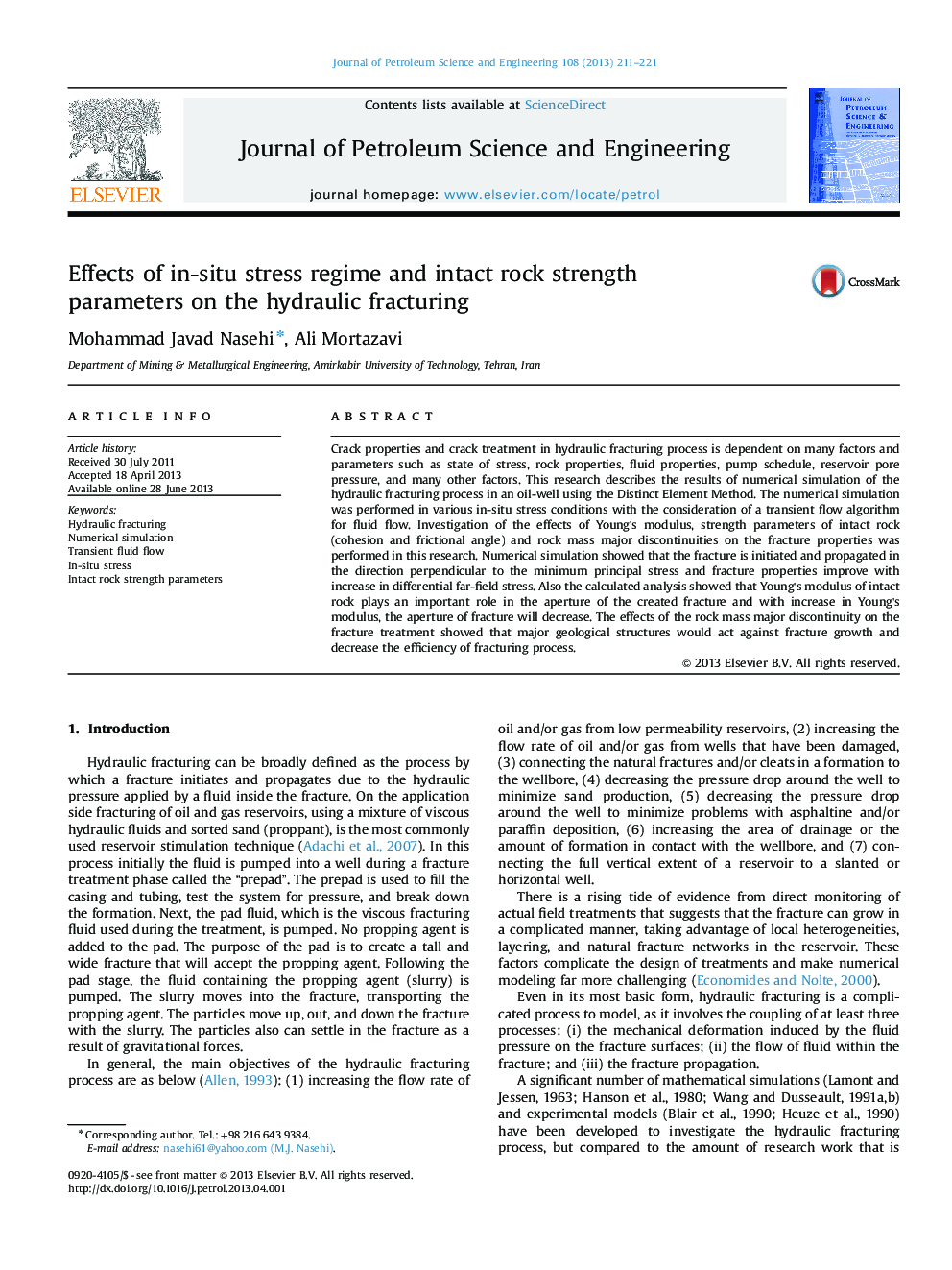| Article ID | Journal | Published Year | Pages | File Type |
|---|---|---|---|---|
| 8127408 | Journal of Petroleum Science and Engineering | 2013 | 11 Pages |
Abstract
Crack properties and crack treatment in hydraulic fracturing process is dependent on many factors and parameters such as state of stress, rock properties, fluid properties, pump schedule, reservoir pore pressure, and many other factors. This research describes the results of numerical simulation of the hydraulic fracturing process in an oil-well using the Distinct Element Method. The numerical simulation was performed in various in-situ stress conditions with the consideration of a transient flow algorithm for fluid flow. Investigation of the effects of Young's modulus, strength parameters of intact rock (cohesion and frictional angle) and rock mass major discontinuities on the fracture properties was performed in this research. Numerical simulation showed that the fracture is initiated and propagated in the direction perpendicular to the minimum principal stress and fracture properties improve with increase in differential far-field stress. Also the calculated analysis showed that Young's modulus of intact rock plays an important role in the aperture of the created fracture and with increase in Young's modulus, the aperture of fracture will decrease. The effects of the rock mass major discontinuity on the fracture treatment showed that major geological structures would act against fracture growth and decrease the efficiency of fracturing process.
Related Topics
Physical Sciences and Engineering
Earth and Planetary Sciences
Economic Geology
Authors
Mohammad Javad Nasehi, Ali Mortazavi,
